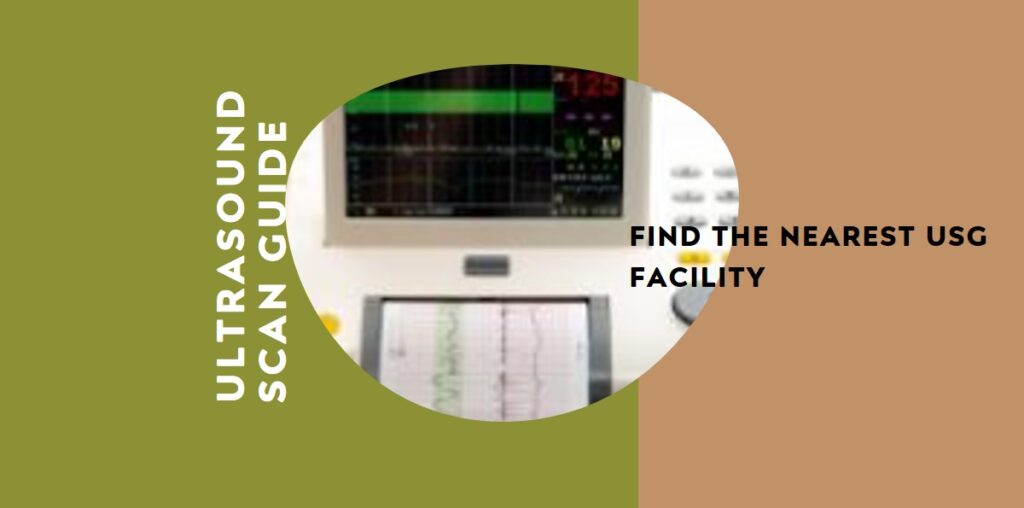In today’s fast-paced world, healthcare accessibility and knowledge are crucial for maintaining good health. One of the vital diagnostic tools available is ultrasound scanning, commonly referred to as USG scanning. If you’ve been searching for “USG scanning near me,” this comprehensive guide will help you understand the procedure, its benefits, and how to find the right service provider.
What is USG Scanning?
Ultrasound scanning uses high-frequency sound waves to create images of organs and structures within the body. Unlike X-rays or CT scans, ultrasound is a non-invasive procedure that does not utilize ionizing radiation, making it safer, especially for pregnant women and children.
How Does It Work?
The procedure involves a small device called a transducer, which emits sound waves. These sound waves bounce off internal structures and return to the transducer, which converts them into images displayed on a monitor. Depending on the area being examined, different techniques and positions may be used during the scan.
Types of USG Scans
1. Obstetric Ultrasound
One of the most recognized types of USG scanning is the obstetric ultrasound. This scan is performed during pregnancy to monitor fetal development, check for congenital anomalies, and determine the gestational age.
2. Abdominal Ultrasound
This type of USG scan is used to examine the organs within the abdomen, including the liver, gallbladder, pancreas, spleen, kidneys, and bladder. It helps diagnose conditions such as gallstones, tumors, or liver disease.
3. Pelvic Ultrasound
A pelvic ultrasound focuses on the organs within the female pelvis, including the uterus and ovaries. It can help diagnose conditions like ovarian cysts, fibroids, or ectopic pregnancies.
4. Transvaginal Ultrasound
This specialized ultrasound involves inserting a transducer into the vagina for a closer view of the reproductive organs. It provides more detailed images compared to abdominal ultrasound.
5. Doppler Ultrasound
Doppler ultrasound is used to assess blood flow through arteries and veins. It can detect blockages or abnormalities in blood circulation, making it essential for cardiovascular assessments.
Benefits of USG Scanning
- Non-Invasive: Ultrasound scanning is safe and painless, making it an ideal diagnostic tool.
- Real-Time Imaging: The ability to view moving images allows for immediate assessments, especially during obstetric scans.
- No Radiation: Unlike other imaging techniques, ultrasound does not expose patients to harmful radiation, making it safer for vulnerable populations.
- Versatile: Ultrasound can be used for various diagnostic purposes, including monitoring fetal development, examining organs, and assessing blood flow.
- Cost-Effective: Generally, USG scans are less expensive than other imaging techniques, making them accessible for a wider population.
What to Expect During a USG Scan
Preparation
Before your USG scan, your healthcare provider may give specific instructions based on the type of ultrasound being performed. For abdominal ultrasounds, you may be advised to fast for several hours prior to the procedure to ensure clear images.
During the Procedure
- Positioning: You will be asked to lie down on an examination table, usually with your abdomen exposed.
- Gel Application: A gel will be applied to the area being scanned. This gel helps the transducer make better contact with the skin and enhances image quality.
- Transducer Movement: The technician will move the transducer over the skin to capture images. You may be asked to hold your breath or change positions for better visibility.
- Duration: The entire procedure typically lasts between 20 to 60 minutes, depending on the complexity of the scan.
- Post-Procedure: There are usually no restrictions after the scan, and you can resume normal activities immediately.
Finding USG Scanning Near You
1. Online Search
The most straightforward way to find USG scanning services is to search online. Entering “USG scanning near me” into your preferred search engine will provide a list of nearby clinics and hospitals. You can also check reviews and ratings to find reputable providers.
2. Healthcare Provider Referrals
If you have a primary care physician or specialist, ask them for recommendations on where to get USG scans. They often have established relationships with local imaging centers.
3. Health Insurance Provider
Check with your health insurance company to see which facilities are covered under your plan. This can help you find affordable options for USG scanning.
4. Local Hospitals
Most hospitals have radiology departments that offer ultrasound services. Visiting a nearby hospital can provide you with immediate access to USG scans.
5. Diagnostic Imaging Centers
Many specialized diagnostic imaging centers focus exclusively on ultrasound and other imaging services. These facilities often have advanced technology and experienced staff.
Cost of USG Scanning
The cost of ultrasound scans can vary significantly depending on the type of scan, location, and whether you have health insurance. On average, USG scans can range from $300 to $1,000 without insurance. It’s advisable to contact your provider to get a detailed estimate based on your specific needs.
FAQs
- Is USG scanning safe for pregnant women?
Yes, ultrasound is considered safe and does not involve radiation exposure, making it suitable for monitoring fetal health. - How long does it take to get results from a USG scan?
Typically, results are available within a few hours to a couple of days, depending on the facility and the complexity of the scan. - Can I eat before an abdominal ultrasound?
Most providers recommend fasting for at least 6-8 hours prior to an abdominal ultrasound for clearer images. - Do I need a referral for a USG scan?
This depends on your insurance provider. Some plans require a referral from a primary care physician. - Are there any side effects associated with ultrasound?
Ultrasound is non-invasive and has no known side effects. Some patients may experience slight discomfort during the procedure, especially if the transducer is pressed firmly against the skin.
Conclusion
USG scanning is a valuable diagnostic tool that offers a safe, non-invasive way to visualize the internal structures of the body. Whether you are expecting a child or seeking answers to medical concerns, understanding the process and knowing where to find USG scanning near you can significantly impact your healthcare experience.




